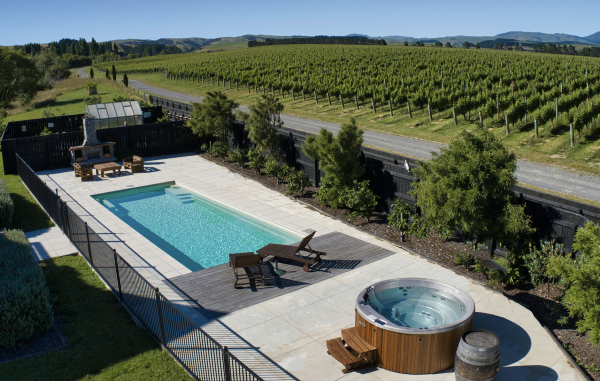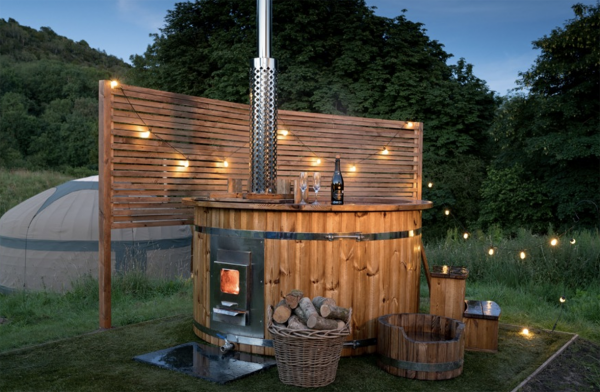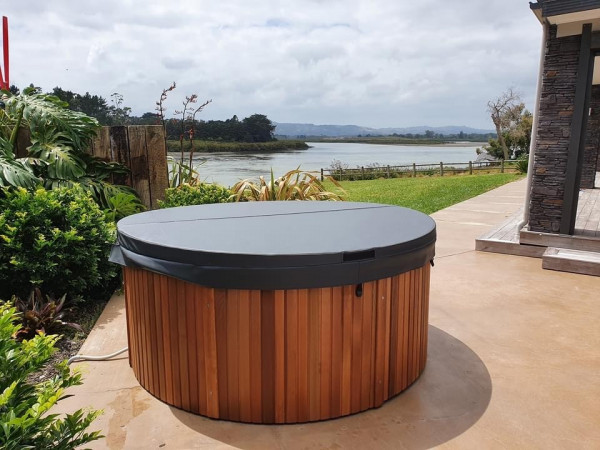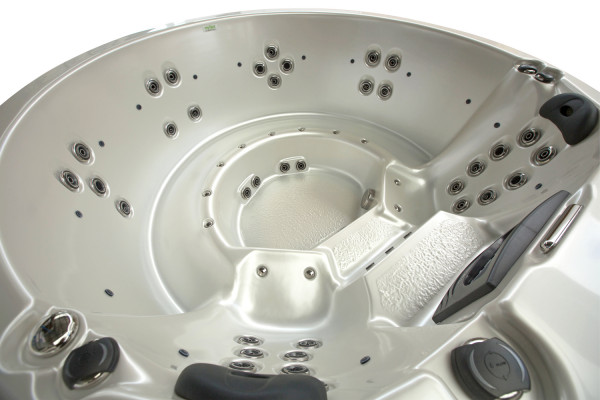myHotTub & other family sized spa pools that may suit your lifestyle
Fun & Family Spas
Looking for a spa for family, friends and kids, then start with our Family & Fun range, sized to fit your average backyard or deck

In the last few decades, spa technology has improved significantly. In their original form, hot tubs were heated by a wood fire, had unreliable temperatures, and came with a demanding maintenance schedule! That is in stark contrast to the modern electric-powered spas we see today.
Timber hot tubs do indeed seem appealing. In part, this is thanks to the aesthetic photos posted on social media. However, they are a hassle to deal with and are not the go-to in modern life. In this article, we will compare and contrast traditional timber hot tubs and modern spas, and give you a sound understanding of the progress that has been made.

Timber hot tubs are round in shape and resembled a half wooden barrel in their appearance. These half-barrels are then filled with water and connected to a heating system. There are three different heating systems for timber hot tubs. The traditional method of heating was with a wood fire, however, modern timber hot tubs utilise gas and electricity.
Hot tubs were traditionally heated using a wood fire. To use a wood fire heater on a wooden hot tub, a log-burning stove was attached to the side of the tub. The temperature of the water was then controlled by adding wood to the log-fire stove and controlling the stove’s airflow. The more air that reached the fire, the hotter the flame would burn. By limiting the airflow, you were also able to reduce the amount of heat produced by the flame.
The temperature of hot tubs was not reliable as they are today. It was quite easy to accidentally overheat the water or let it cool down too much. This heating system is a safety hazard and thanks to innovation, has been largely eliminated.

Modern hot tubs are much more efficient to heat and use either electricity or propane. Hot tubs powered by electricity are far more common than propane-powered hot tubs.
Using electricity and modern heaters to heat your hot tub means that you have full control of your hot tub temperature. Eliminating the need to adjust your temperature via fire and airflow also means that you can be assured that whenever you choose to use your hot tub, it will be at your preferred temperature.
Using electricity is also much more eco-friendly. Timber hot tubs do not contain insulation like a modern spa; multiple layers of inbuilt insulation plus a tight fitting hardcover on top ensures minimal heat loss. Large amounts of heat were lost through the timber and required the heater, aka fire, to be continuously burning. The additional water used to complete water changes is also unsustainable, especially if you are in a drought-prone area.

Traditional timber hot tubs need to be cleaned much more frequently than modern ones. Traditional tubs required a water change every 2-3 uses. In addition to changing the water, they also needed to be wiped down and rinsed to keep the hot tub clean and in good condition. The only way to use a timber hot tub without having to do a water change every 2 to 3 uses is to add chlorine or bromine to the water as a sanitiser. However, these chemicals can be detrimental to the timber and cause a shorter lifespan.
Modern hot tubs require less cleaning and maintenance than their traditional timber counterpart. Modern hot tubs will need to be maintained approximately every 4 to 6 months. This major clean should include a water change, a wipe down of the internal surfaces and a general check for any maintenance issues. You can read our information on maintaining a hot tub here.

Timber hot tubs offer a rustic feel and natural scent that will relax you to your very core. They were serene in nature and didn’t disturb the peace and quietsurrounding you. They were also more akin to a hot, relaxing bath with no bubbles to speak of and had a hard, smooth surface to sit on.
If you see these tubs in modern times, they are likely outdoors where you can experience nature with little to no distractions present.
Modern hot tubs have come a long way and are almost as appealing to the eye but also offer a lot of comforts you won’t find in traditional timber hot tubs. They often come equipped with fully moulded recliner seats, built-injets designed to massage your entire body, and bubbles that soothe your skin. High-end modern hot tubs have even been known to come with LED lighting, waterfalls and in-built sound systems.
They may not offer the traditional and natural experience of their predecessor, but it can be argued that they are far more comfortable and relaxing.
Timber hot tubs were beautiful and relaxing luxuries that would make anybody comfortable in the natural environment. However, they were difficult to control their temperature and required constant maintenance and cleaning. Some companies do still specialise in ‘modern’ timber hot tubs that allow for accurate temperature control and don’t require a fire, but they still require a time-consuming maintenance schedule that is hard to follow in modern-day life.
Despite timber hot tubs not suiting today’s modern lifestyle, we can be eternally grateful to timber hot tubs for being the first step towards our current spas that are perfect year-round and boast a maintenance schedule that even the busiest executive could maintain. Without our ancestors painstakingly (and literally) stoking the flames in the hot tub revolution, we would not have one of the most relaxing and enjoyable past times available to us today.
Almost everybody has had the pleasurable experience of sitting in a hot tub with their friends and a beer in hand, watching the game or discussing this week’s political issues. It is a staple of the Australian experience. While we may not want to continue with the use of traditional timber hot tubs, we owe one of our favourite activities to the men that came up with this incredible innovation way back in 460BC!